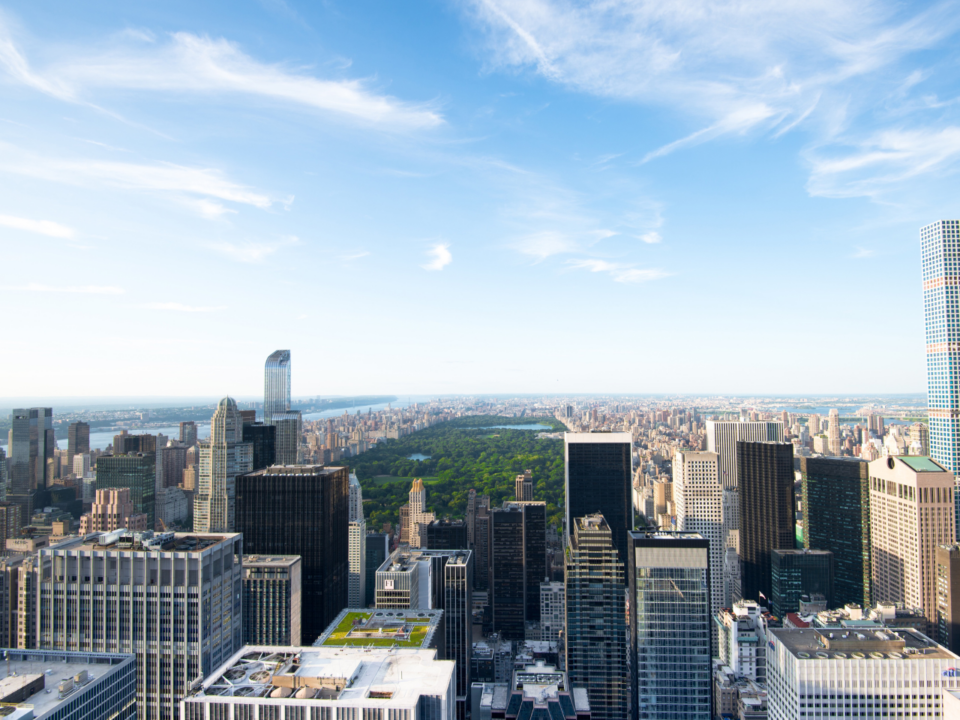On April 22, 1970, more than 100,000 New Yorkers gathered in Union Square Park to commemorate the inaugural Earth Day. Mayor John V. Lindsay closed Fifth Avenue to cars, transforming the bustling thoroughfare into a pedestrian-friendly zone. This bold move enabled New Yorkers to participate in rallies, marches, and picnics, fostering a sense of community engagement and solidarity in the fight to bring awareness to the emerging consciousness about air and water pollution.
The First Earth Day
To envision the magnitude of Earth Day 1970, it’s important to realize that there was no Environmental Protection Agency, Clean Air Act, Clean Water Act, or any other legal or regulatory framework in place to protect our environment. In the previous year, under the leadership of Wisconsin Senator Gaylor Nelson, Earth Day events were organized by a handful of young activists, as an antiwar style on college campuses. While this movement began to pick up traction, it wasn’t until the late summer of 1969, on a trip to the West Coast for a series of environmentally-themed speeches, that Sen. Nelson witnessed the devastating impact of a massive oil spill near Santa Barbara, California earlier that year. It wasn’t long before this movement surpassed campus activism and became a nationwide catalyst for change. The Environmental Action Coalition, a national organization, planned the very first Earth Day, and with a nudge from Senator Gaylor, propelled the nationwide environmental impact that Earth Day is known for today.
Senator Nelson created a non-profit organization, Environmental Teach-In, Inc., and hired Denis Hayes, a young former Standford University student-body president, as national coordinator. The two quickly agreed on April 22, 1970, as the date for a nationwide teach-in. The goal of this teach-in was to gather as much participation as possible, in public spaces within the community. They also sought to enlist the participation of organizations such as labor unions, the League of Women Voters, Planned Parenthood, the American Cancer Society, and established environmental groups. However, above all, a full-page ad for a national Earth Day in the New York Times grabbed the attention of network broadcasting giants and launched the campaign to astounding new heights.
All Eyes on New York City
Union Square became the focus of dozens of Earth Day observances throughout the day on April 22, 1970. Richie Garrett, president of the Hudson River Fishermen’s Association (HRFA), which had been following industrial polluters on the Hudson River for almost five years at that point, spoke to the crowds in Union Square. Garrett told the crowd, “The country has problems with drugs and crimes and racial hatred. But the way I figure it, clean water and clean air and a clean Earth is the most important issue of all. If we lose our rivers, the other social problems will be dwarfed. Black or white, hawk or dove, we’ll all drown in garbage up to our eyeballs.”
The Earth Day celebrations in Union Square Park included cleanup crews of school-aged children such as those from the Convent of Sacred Heart. Con Edison donated brooms, mops, and other supplies to help with cleanup efforts. These clean-up initiatives extended to other boroughs like Brooklyn, where school children joined together to clean up a beach.
The State of New York Takes Action
Beyond the festivities, Earth Day did more than bring people together out into the streets of New York–it laid the groundwork for ongoing environmental initiatives and advocacy efforts. In New York, where state voters passed a Pure Waters Bond act in 1965, designating nearly $1 billion for sewage treatment plants and other efforts to clean up the Hudson River, April 22, 1970 marked the creation of the state Department of Environmental Conservation, one of the very first agencies in the nation. By the end of 1970, Congress and President Richard Nixon had agreed on the creation of the Environmental Protection Agency and passed the Clean Air Act, mandating federal legislature for emissions and air quality.
A Lasting Legacy of Climate Stewardship
Today, New York has become a cleaner, greener state since its first commitment to environmental leadership back in 1970. Over the last nine years, Governor Cuomo has been a prominent figure in intensifying New York’s climate action and securing nation-leading achievements such as the 2014 Fracking Ban and the 2019 Climate Leadership and Community Protection Act (CLCPA). Among other global leaders, New York State and City are working to reduce GHG emissions by over 80% by 2050 to help avoid the most catastrophic effects of climate change. By 2050, New York State hopes to reduce emissions by 85%, and the City goal is 80%. Leaders believe that the only way to circumvent this issue is to aggressively transition off of fossil fuels and onto clean, renewable energy.
In the decades since that historic day, New York State has continued to usher in environmental stewardship and innovation. The city remains committed to building a more resilient and eco-friendly future for generations to come. As we reflect on the first Earth Day, it’s important to remember how far the State has come to unite communities in the pursuit of a common goal––a cleaner, greener New York.

